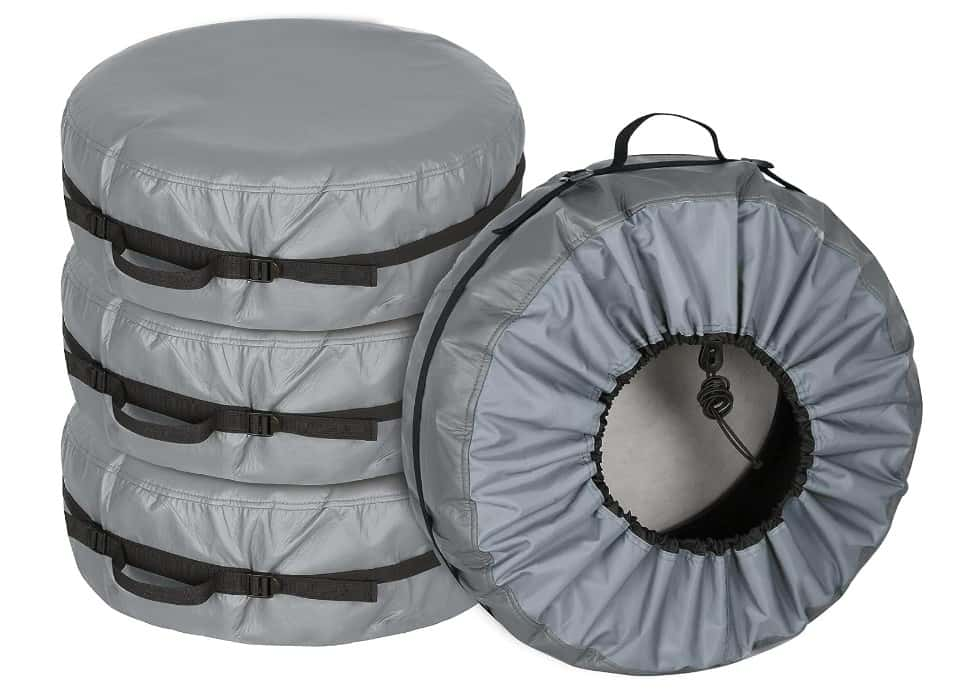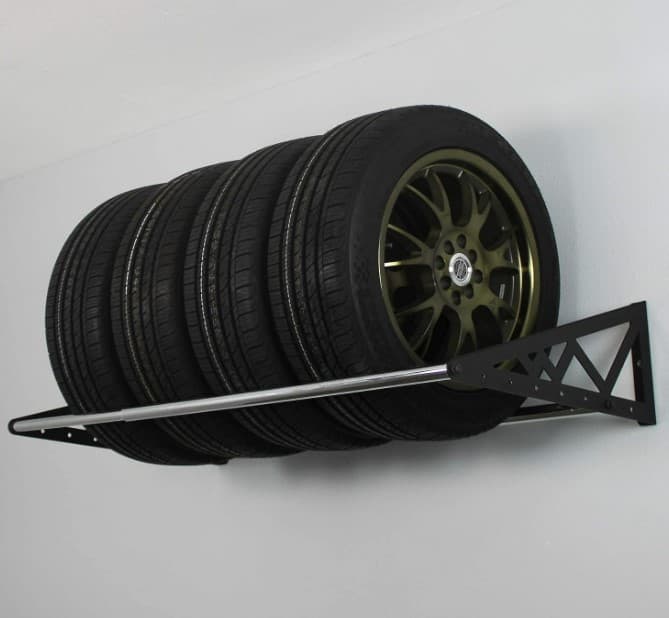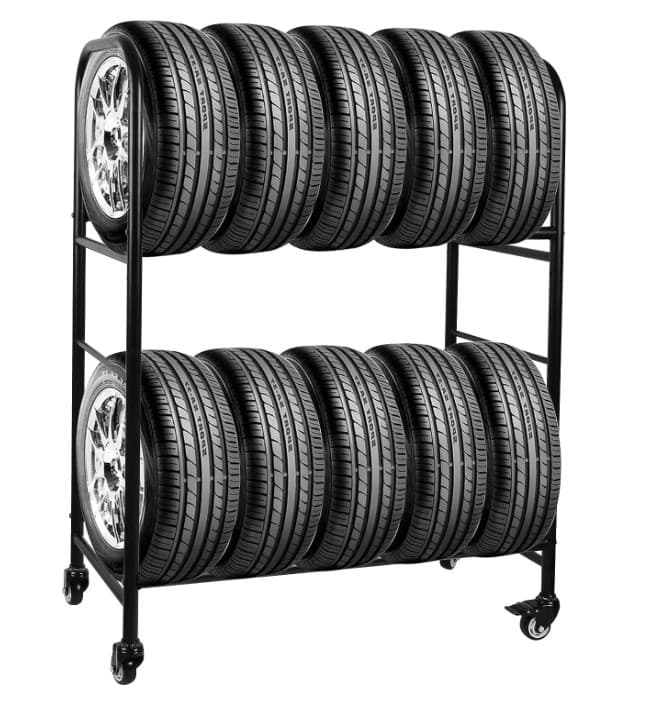Tire and Wheel Storage Tips
Tires are a crucial component of our vehicles and are often overlooked in terms of their maintenance and storage. As responsible vehicle owners it’s important to recognize the significance of proper tire and wheel storage.
When tires are stored incorrectly they can suffer from various forms of damage which can lead to compromised performance and safety on the road. By understanding the importance of proper storage practices and implementing them diligently, we can extend the lifespan of our tires, improve fuel efficiency, and ensure optimal performance.
Why is Proper Tire and Wheel Storage Important?
The importance of proper tire and wheel storage cannot be overstated. When tires are stored under unsuitable conditions or with improper techniques, they become susceptible to a range of issues that compromise their integrity. One common problem is deformation due to excessive weight or improper stacking methods.
This can result in uneven tread wear or even structural damage, rendering the tire unsafe for use. Additionally, exposure to extreme temperatures or direct sunlight can lead to rubber degradation, reducing grip and increasing the risk of blowouts while driving.
Another significant concern when it comes to storing tires is moisture buildup. This can occur in environments lacking adequate ventilation or when tires are not properly protected from humidity. Moisture causes corrosion on metal rims or wheels, weakening them over time. It also encourages the growth of mold and mildew on rubber surfaces which further deteriorates their condition.
Benefits of Storing Your Wheels and Tires Right
Adhering to recommended tire and wheel storage tips offers numerous benefits for both short-term preservation during seasonal changes or long-term storage periods:
Prolonged Tire Lifespan: Properly stored tires are less likely to experience premature aging caused by environmental factors such as exposure to UV rays or extreme temperatures.
Safety on the Road: By ensuring that your tires are in good condition when they are put back into service you reduce the risk of accidents due to tire failure or compromised grip on the road.
Savings: By maximizing the lifespan of your tires you can avoid frequent replacements and save money in the long run. Additionally, well-maintained tires contribute to better fuel efficiency, reducing overall expenses related to gas consumption.
Convenience: Properly storing your tires ensures that they will be ready for use when needed. This eliminates last-minute scrambling and saves time when it comes to seasonal tire changes.
Eco-Friendly Approach: By extending the life of your tires through proper storage practices, you contribute to reducing waste and promoting sustainability.
General Tire Storage Tips
Tire storage is a critical aspect of maintaining the longevity and performance of your tires.
Before stowing them away, it’s crucial to clean and inspect your tires thoroughly. Start by using mild soap and water to remove any dirt, debris, or road grime that may have accumulated on the surface. Gently scrub the tires with a soft brush or sponge, ensuring all areas are adequately cleaned, including the sidewalls and treads. After cleaning, allow them to air dry completely.
While cleaning your tires, take this opportunity to inspect them for any signs of damage or wear that may need attention before storage. Carefully examine the tread depth for any excessive wear patterns or unevenness that might indicate misalignment or improper inflation. Check for any visible cracks, bulges, or punctures on the tire’s surface as these could compromise their structural integrity.
Once your tires are cleaned and inspected, it’s essential to store them in an optimal environment. Choose a cool dry area away from direct sunlight and extreme temperatures that can accelerate tire aging and deterioration. High temperatures can cause rubber compounds to break down faster while direct exposure to sunlight can lead to discoloration, degradation, and dry-rot. To further protect your stored tires from moisture-related issues such as mold growth or rotting rubber, ensure they are stored in a well-ventilated space with proper airflow. Consider using dehumidifiers or desiccants like silica gel packs in the storage area to absorb excess moisture effectively.
Storing Tires Mounted on Wheels
When it comes to storing tires on rims or wheels, proper positioning is crucial to maintain their shape and integrity during the storage period. One of the recommended methods is to stack the tires vertically. To do this you can utilize a tire rack or a sturdy shelving system specifically designed for tire storage.
These racks provide adequate support and ensure that each tire maintains its individual weight load without being subjected to excessive pressure. For extra precaution, you can place cardboard or foam between stacked tires as a protective layer to prevent any potential abrasion or damage.
Alternatively, another suitable technique for storing tires on rims/wheels is hanging them from hooks or wall-mounted racks. This method not only saves space but also minimizes the risk of distortion caused by stacking weight onto the tires. When hanging the tires it’s essential to ensure proper weight distribution across all rims/wheels. This will prevent any imbalances that may lead to deformities over time. Moreover, avoid placing excessive pressure on one specific area of a tire when using hooks or racks; evenly distribute the load along the circumference of each rim/wheel for optimal results.
Remember, regardless of which method you choose, always handle your tires with care and prioritize their well-being throughout the storage period to maximize their longevity and performance when they are mounted back on your vehicle.
Preparing Tires for Extended Storage Periods
Properly inflating your tires before storage is crucial to prevent flat spots from forming. Flat spots occur when a tire remains stationary in one position for an extended period of time, causing the weight of the vehicle to compress a specific area of the tire.
By inflating the tires to their recommended pressure levels, you ensure that they maintain their shape and distribute weight evenly. We recommend storing your tires at whatever your vehicle requires their tire pressure levels to be. (usually between 30 and 35 Psi)
Winter Tire Storage Tips
When it comes to storing winter tires, following a few additional precautions will help ensure their optimal performance when the cold season arrives. Firstly, it’s crucial to clean and thoroughly dry the tires before placing them in storage. This prevents any residual moisture from causing damage or promoting the growth of mold or mildew.
Next, store winter tires in protective bags specifically designed for this purpose. These bags shield the tires from dust, dirt, and any potential scratches or scrapes that could occur during storage. Avoid stacking heavy objects on top of winter tires as excessive pressure can deform them and compromise their integrity.
Remember
By taking the time to implement these tips properly, you can rest assured knowing your tires are in good condition when you need to hit the road again with confidence. So go ahead and give your tires the care they deserve – they’ll reward you with safer travels and smoother rides!
Please note that this blog post contains Amazon affiliate links. This means that if you make a purchase through one of these links, we at TPMSRESET.COM may earn a small commission at no extra cost to you. We only recommend products that we personally use and believe in. Thank you for supporting us.


